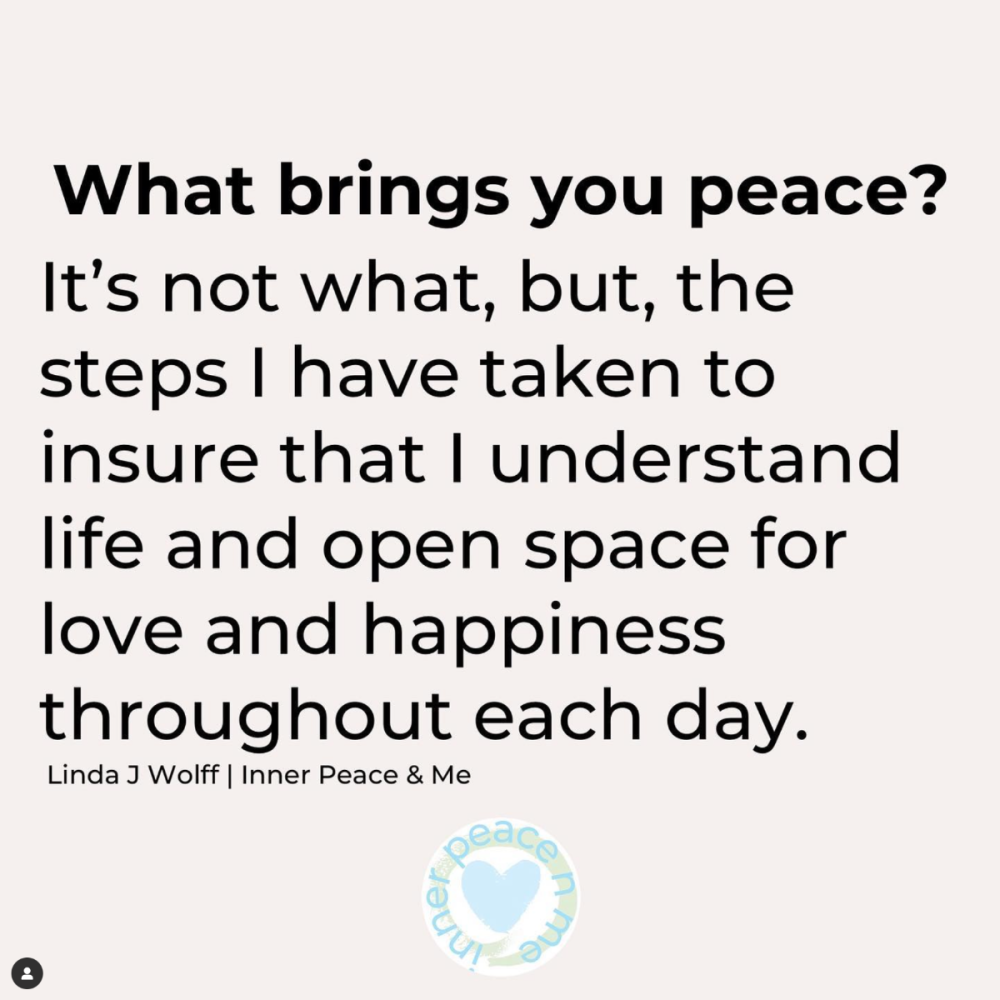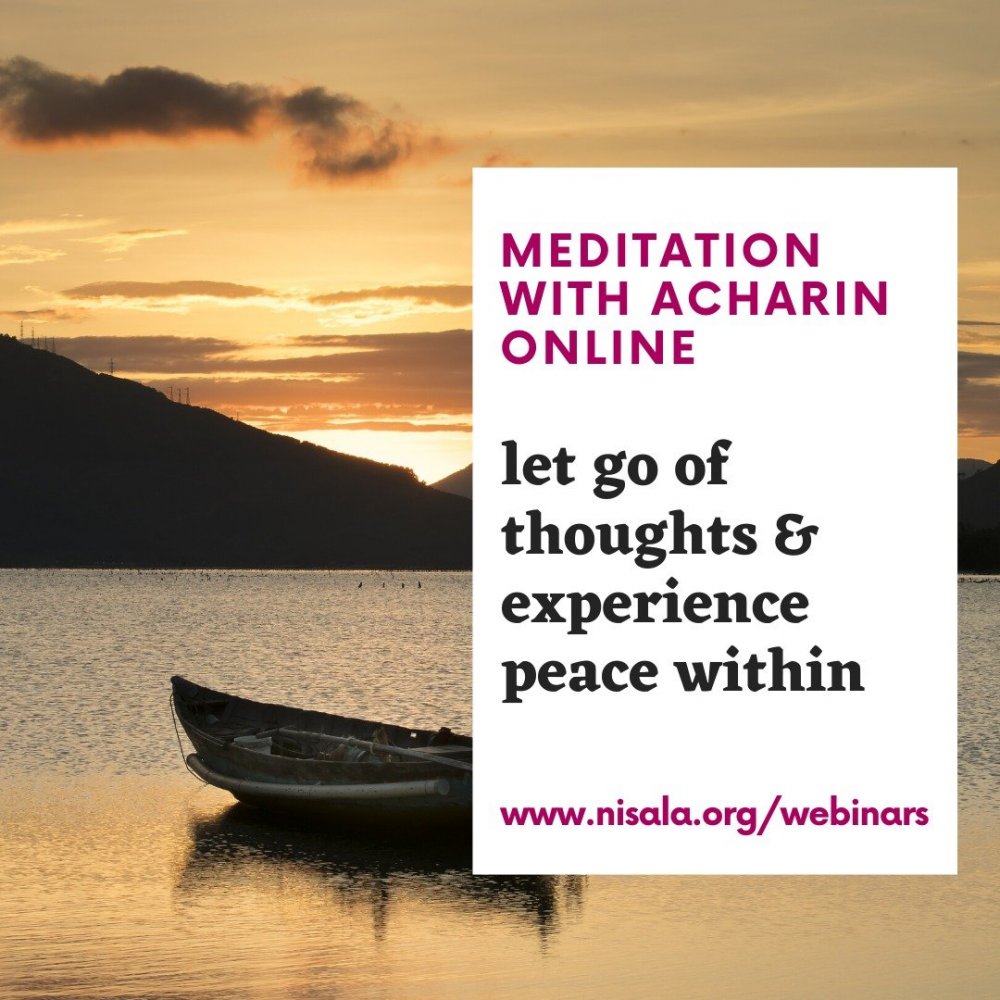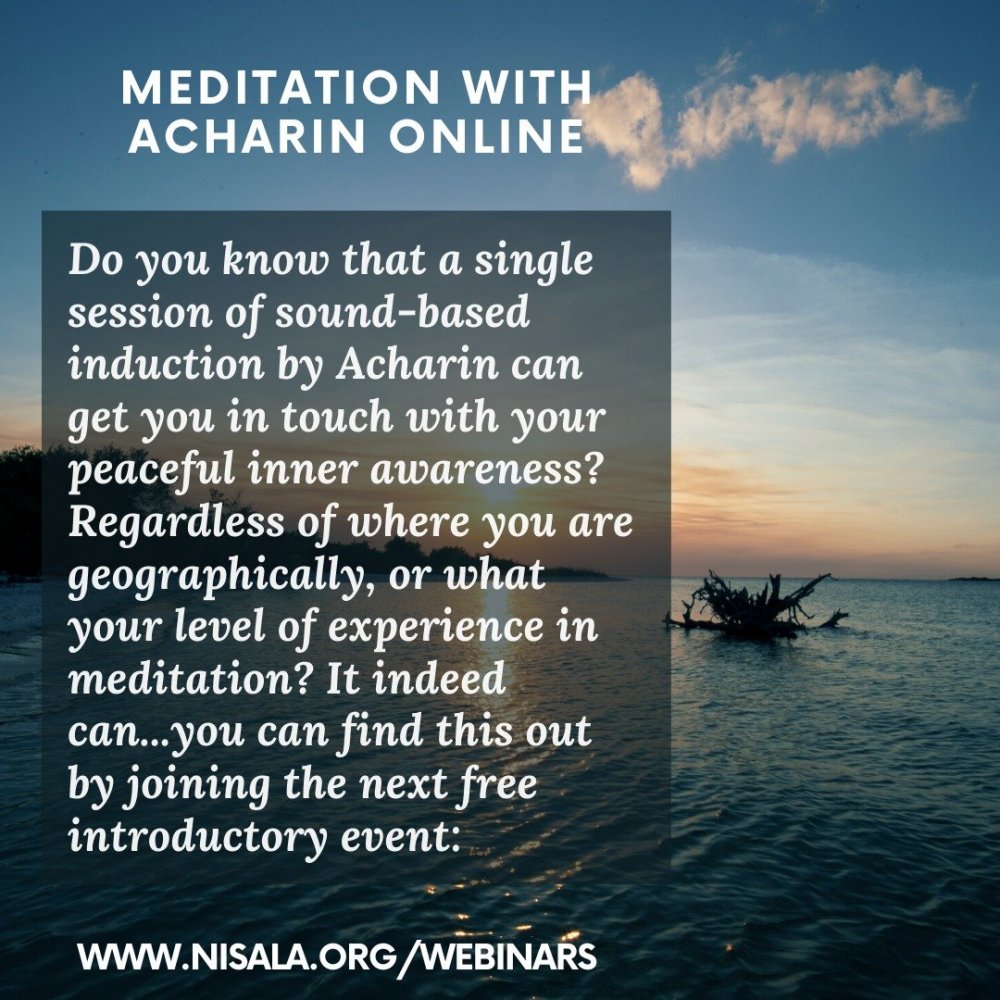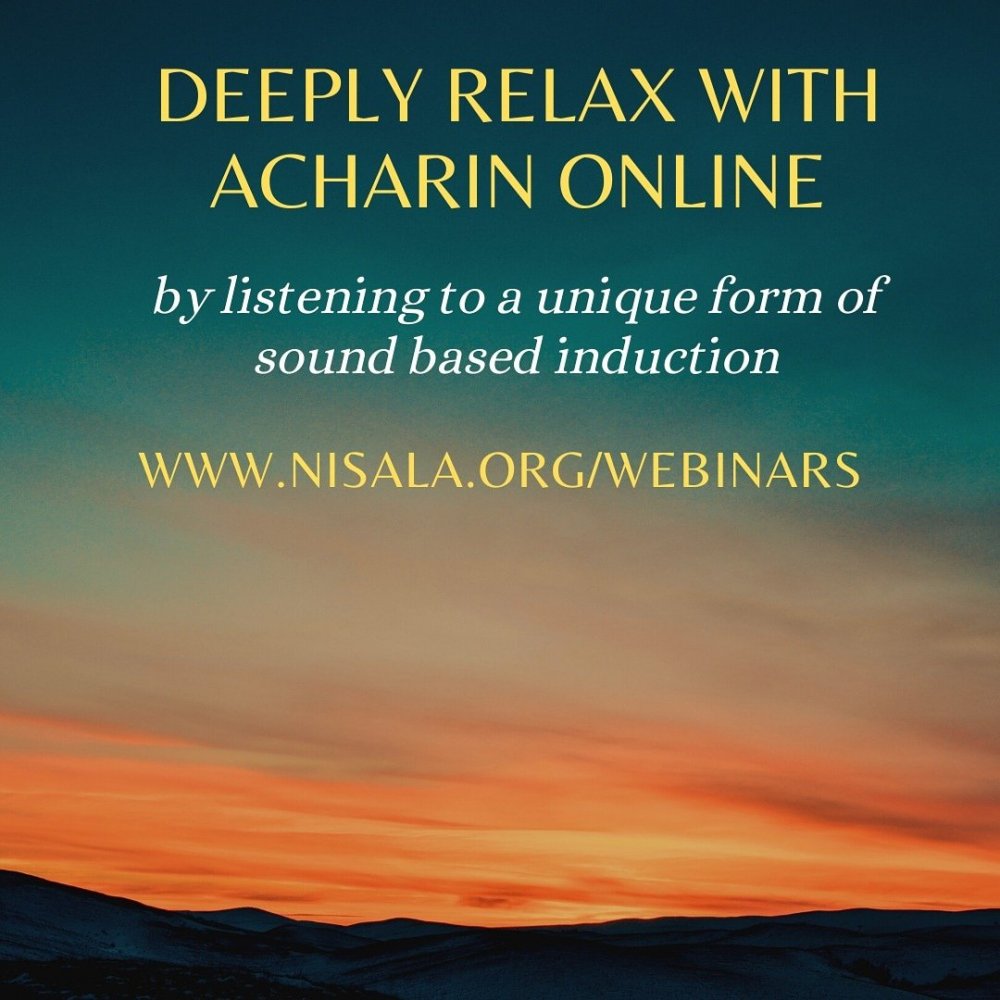Search the Community
Showing results for 'inner'.
-
Hello, my name is Linda! Wanted to reach out and wish everyone well. By day you will see me helping other's find inner peace, if I'm not there, I'm narrating my podcast "Cultivating Calm Within.) I love articulating articles for inner peace and how I came about finding inner peace myself. So, I share my journey and there steps of practice that brought me here. I am looking forward to meeting new people here on Happiness.
-
The signs of Need? Are you feeling them? I first understood what they were when my heart started beating a thousand beats per minute and panic wretched my body as I grabbed my heart. A stroke? Damn straight, who was I to think that I could be a single mom and take on raising a six-year-old-girl, pay bills, and carry all the demands of life without suffering. Does this sound familiar to you? Phrase: "No one can get inner peace by jumping on it." author unknown, yet, I can totally relate to this phrase. I read and hear people complain about how they are feeling physically and mentally. I'm depressed. I'm unhappy. I'm this or that. But, what I want to hear is what kind of work they are putting into the mind, body, and soul to feel balanced and full of harmony? I call this mental noise with no effort. That stroke I suffered, reality check! A light switch turned on; saying that I cannot leave my daughter alone in this world to fend for herself. What about you?
-
In today's noisy and unsettling world, in can be difficult to find inner peace and tranquility. Dee Marques explores the three key techniques that can help: mindfulness, shadow work and cultivating equanimity. It’s true that human history has always been marked by unsavoury events, but perhaps you share the feeling that these days, conflict, hatred, and violence suddenly seem to be all around us. Feeling you don’t really know what’s happening to the world is deeply unsettling and can threaten your inner peace and happiness. Yet, there are things you can do to counteract these emotions. Here are some ideas on how you can promote inner peace within yourself – and with others – regardless of how uncertain the world around us may be. Finding inner peace When dealing with hatred and violence, finding ways to promote inner peace requires mindful action. Here are the three key techniques you can use to try and find that inner calm and quiet. 1. Mindfulness Our first suggestion is to practise mindfulness. Not just because of its ability to transform your inner self, but because it can change your perception of the world, too. Indeed, scientific studies have shown that regular mindfulness practice appears to shrink the amygdala (the part of the brain that controls feelings of fear), while at the same time activating the pre-frontal cortex, which is associated with decision-making and awareness. All this means that mindfulness can help us regulate our emotions instead of simply reacting to triggers. It also helps us make more balanced judgements about what’s going on around us, as well as inside us. Discover some great mindfulness tips, such as mindful eating and drinking, gratitude walks and creating a start-of-the-day ritual. Finding inner peace through gratitude walks 2. Shadow work When it comes to finding inner peace and calm, our second suggestion is to engage in shadow work. This transformational practice is based on the idea that our feelings and perceptions about ourselves dominate the way we feel and act towards others. The shadow is the “negative you” or “your dark side”. With shadow work, instead of pushing it to the back of your mind or repressing it (as most of us feel tempted to do), you should explore it. This helps you to learn more about your own prejudices and misconceptions. The basic outline of shadow work looks like this: Acknowledge the negative emotions triggered by some people, news or events. Connect with your shadow and establish a conversation with it. What is it trying to achieve? Is its overall intention positive or negative? In most cases, your shadow holds on to negative emotions to protect you from harm. Can you find other ways of achieving the same without getting caught in a negative circle or without blaming others? Last but not least, remember that peace is not a goal that can be reached through certain mediums, but rather peace is the medium itself. In other words, use peace to bring inner peace by showing kindness and consideration towards your body and mind. For example, loving-kindness meditation has been proven to reduce self-criticism, promote peace with ourselves and others, and generate positive feelings towards strangers. .embed-container { position: relative; padding-bottom: 56.25%; height: 0; overflow: hidden; max-width: 100%; } .embed-container iframe, .embed-container object, .embed-container embed { position: absolute; top: 0; left: 0; width: 100%; height: 100%; } Loving kindness meditation for inner peace YouTube/LovingKindnessMeditation 3. Cultivating equanimity Cultivating equanimity can also help you to find inner peace and also peace with the outside world. Equanimity is one of the Four Sublime States in the Buddhist tradition, and the word derives from Sanskrit expression that means “to see without interference”. Equanimity is also defined as even-mindedness, a balanced reaction to both positive and negative events or thoughts, and the ability to achieve a state of mind that cannot be affected by bias and prejudice, but that's driven by compassion instead. “Finding ways to promote peace requires mindful action. Basically, you’ll need to disarm the inner world first in order to disarm the outer world.” Cultivating equanimity involves re-wiring your brain through conscious practise. Yoga (especially gratitude yoga) provides the ideal conditions to work on this. Find your equanimity mantra (something that reminds you of the need to stay unbiased), start your yoga session, and take note of any negative reactions triggered by thoughts or people you dislike. Keep referring to your equanimity mantra while acknowledging that you are responsible for your own happiness and peace of mind. Finding peace in the outside world Of course, we should all do our best not only to promote inner peace in our minds, but also in the outside world. To do that, you don’t need to make grand gestures. As Buddhist author and peace activist Thich Nhat Hanh said: “Learn the art of making one person happy, and you will learn to express your love for the whole of humanity and all beings.” So, here are 10 easy-to-put-into-action gestures of peace and kindness: Send a heart-felt handwritten card to a friend or relative Compliment a colleague and express how much you appreciate them Offer a small gift (e.g. fruit, biscuits) to the person who delivers your post Donate to a charity shop Volunteering is important. Try it at a shelter or soup kitchen Offer your place in the queue to the person behind you (or try another random act of kindness) Track down an old teacher or lecturer, and send them a note of appreciation Bake some treats and take them to work to share with colleagues Let another driver into your lane Strike up a conversation with a homeless person Meditation can help you to cultivate inner peace shuttertsock/Jack Frog When it comes to finding inner peace and calm in troubled times, it’s important to resist isolation, even if this seems to go against our most basic instincts. For example, you could get involved in community-building initiatives, as this can help establish meaningful conversations with those who hold different views. You can also join non-violence organizations, or learn more about how prejudice and stereotypes affect us by signing up to prejudice reduction workshops or seminars in your local area or online. Conclusions: finding inner peace Finding kindness and peace within yourself and in the world won’t happen overnight, but mindfulness practise, shadow work, cultivating equanimity, and resisting isolation are within the path to hope and joy. To cope with the troubled times we're currently living in, you’ll need to be persistent and willing to challenge your inner self. ● Main image: shutterstock/marvent happiness.com | The fine art of being: learn, practice, share Are you a happiness.com member yet? Sign up for free now to: ■ enjoy our happiness magazine with practical life tips ■ share and support others in our happiness forum ■ learn with free online classes in our happiness Academy Gratitude | | Meditation | Volunteering Written by Dee Marques A social sciences graduate with a keen interest in languages, communication, and personal development strategies. Dee loves exercising, being out in nature, and discovering warm and sunny places where she can escape the winter.
-
When we are stuck making a decision, inner turmoil or conflict often arises, leading to both mental and physical health issues. Psychologist Stanislava Puač Jovanović explains the reasons for inner turmoil and the five steps you should take to move past it. For most of my adolescence and adulthood, I felt conflicted about where to live. My mother is from one country, and my father was from another. When I was 14, they divorced. Suddenly, my family was scattered across Europe. So, my inner turmoil started. Where – or rather with whom – to live was a burning question during the period of my parent’s divorce. The same issue arose when I had to pick a high school, then college — and after graduation when I was supposed to get a job. In fact, battling inner turmoil didn’t truly leave my side until recently. And I do not exclude the option of it becoming current again at some point in the future! Inner turmoil is everyone’s known (and rather unpleasant) companion. It does not matter if you are picking a shirt or a spouse. Internal conflicts are usually inseparable from the decision-making process. Therefore, we have little choice but to accept their presence. We can, however, understand inner turmoils and learn how to resolve the chaos they tend to cause. In this article, I'll explain: What inner turmoil is and what adversities may come with it What causes inner turmoil How to move past it First, let us get to know inner turmoil and why it might be the wrong place for you to stay for too long. What is inner turmoil and why is it bad? Inner turmoil is not, strictly speaking, a phrase that psychologists would use. However, it describes the experience very well. The term that is used in academic psychology is inner or internal conflict. Internal conflict is one of the prime notions of psychoanalysis. Sigmund Freud described conflicts as a consequence of the coexistence of two or more incompatible elements in a person’s psyche. These elements can be your needs, wants, beliefs, expectations, actions — conscious or unconscious. Simply put, two forces are clashing inside of you. Inner turmoil can cause mental and physical health problems It could be that there are two (or more) options that seem alluring. This is the “easiest” of the conflicts. For example, you could be courted by two people who both attract you. However, by virtue of the situation, when you pick one, you lose the other. Adding to the ordeal is a common effect — the option you dismissed will start looking more appealing. Double-avoidance conflict is a more difficult one because you must choose between two unfavourable options. For example, you might need to decide if you want to be unemployed and broke or accept a job you hate. Approach-avoidance conflict is something you experience when one option has qualities that both attract and repel you. Moving to a city that you do not like but that offers a better professional outlook is a good example. Or dating someone who you are physically attracted to but whose personality you are unsure of. The problem with this sort of inner turmoil is that the more you approach the option, the more the anxiety grows. On the other hand, the more you move away from it, the more you start to desire it. Why can inner turmoil be bad for you? As I said before – inner turmoils are not something we can avoid. They are a part of our lives. However, staying in one for too long can be bad for you. Why? When you are not at peace with yourself and do not understand your preferences, you will probably have a hard time getting along with others. Inner conflicts and ambivalent desires transfer to your close relationships. “Moving past inner turmoil means making a move. Whether it is a psychological change or an enacted decision, something has to happen.” Inner turmoil in which you are not clear about your role and identity, as a theoretical paper demonstrated, can make you underperform in negotiations in business. Any other sort of negotiations, it may be added, can be affected by your inability to decide which position and role you are taking. When in internal conflict, you might find yourself unable to move forward. Research confirmed that when you are ambivalent, regardless of how much power in a situation you may have, you will probably remain inert and avoid action. Furthermore, inner turmoil may lead to a range of emotional and physical disturbances. Irritable bowel syndrome, for example, has been found to be associated with internal conflicts. In particular, you may be at risk of the syndrome if you feel uneasy about being emotionally open and expressing your feelings. What causes inner turmoil? Remember my example from the beginning of the article? As I was born and spent most of my life in my father’s homeland, I felt more at home there. On the other hand, it was wiser to move to my mother’s homeland as it has incomparably better living standards. Not to mention wanting to be with my little sister, who was four at that point. Understandably so, a long list of problems and issues (logistical and emotional) intertwined with the whole situation. In short, it was a hot mess. And, my inner turmoil was equally as intense. What caused it was too many elements of the situation that did not align with each other. Conflicting needs, beliefs, actions and expectations cause internal turmoil. According to the classic psychoanalytic theory, our Ego has to serve three masters. It has to find a way to reconcile the external world’s demands, instinctual needs and desires (Id), and the ethical and moral principles we acquired growing up (Super-Ego). Needless to say, there is rarely harmony between these masters. Inner turmoil: our ego has to serve three masters shutterstock/Pixel4Images So, inner turmoil arises. You simultaneously want and do not want something. Your longings might clash with your principles. You know that one option is rational, but your heart desires another. Many elements interweave, and you end up in a state of internal chaos. It is an entirely natural position, a part of being a human. You could, for example, be in an utterly unhappy marriage. However, you were raised to consider a divorce something outright wrong. Your need to feel psychologically well and your ethical beliefs oppose each other. You might long to do something creative in life and be an artist, but you feel pressured to meet your family’s hopes and find an office job. Your true desires and wish to please your loved ones’ expectations clash. Or, you have needs that do not match social norms in your culture, like sexual orientation. The authentic You is not in line with society’s standards, and an inner turmoil is born. “Once you have committed to leaving the state of turmoil, help yourself decide what you want and what you will do.” You might find yourself falling for your friend or a coworker. You yearn to make a move, but it poses a risk of losing them and destroying the existing relationship. Your feelings conflict with your desire to maintain the safety of what you have now. You may be torn between your roles of an individual, child, parent, friend, professional, spouse, and the desires and expectations that come with those roles. How to move past inner turmoil If you're wondering how I resolved the conflict of where to live — I had to make a choice. I was compelled to do so when external circumstances called for it (the divorce, the schooling). But, the time came when I did not have to make a choice — I could merely succumb to inertia and avoid making any commitment. And I did for a while. Nonetheless, I could not keep dodging a decision forever. Moving past inner turmoil means making a move. Whether it is a psychological change or an enacted decision, something has to happen. Otherwise, you remain stuck within the whirlpool of conflicting needs and perspectives. Here's what you can do to start dealing with internal conflict: 1. Understand the turmoil Clinical practice shows that you need to explore the symptoms of the conflict — how is it manifested and in what situations do you notice it? What emotions and beliefs are keeping it alive? What rigidities in your mind are preventing you from leaving the conflict behind you? How do you usually try to cope with it? Knowing your most profound traits and desires (even the dark ones) is a must of authentic living and a prerequisite for resolving any inner conflict. 2. Make a decision As I've explained, one of the adversities of inner turmoils is a tendency for inertness they may throw you into. Give yourself enough time to contemplate — but do not procrastinate. Bring yourself to make a move. Fear of change, dread of making a wrong choice, feeling lost in life, or undefined anxiety are perfectly understandable reactions. However, putting a decision off is a sort of self-sabotage. So, promise yourself you are going to move ahead — and do so. Making a choice is essential to escape inner conflict shutterstock/ESB Professional 3. Facilitate the choice Once you have committed to leaving the state of turmoil, help yourself decide what you want and what you will do. Talk to friends, a psychotherapist or a coach, make pros and cons lists — whatever works. 4. Stop feeding the conflict When you have deciphered what has caused your inner turmoil and what you want to do about it, stop adding to the anxiety it causes. For example, if you want to get a divorce, stop evoking the thoughts of how “wrong” it is to do so that your parents or culture imposed on you. 5. Believe in yourself We often feel hindered by self-doubt. You might want to apply for your dream job but are reluctant because you doubt you are good enough. Give yourself plenty of self-love and practise self-compassion. You can do it. Even if you make a wrong choice, you are capable of mending the damage. Takeaway: inner turmoil can also be seen as a hint Internal conflicts are anything but a pleasant experience. A quote from Søren Kierkegaard’s ‘Either/Or’ illustrates the anguishing nature of human lives: “Hang yourself, you will regret it; do not hang yourself, and you will also regret that; hang yourself or do not hang yourself, you will regret both; whether you hang yourself or do not hang yourself, you will regret both.” Now, Kierkegaard was a philosopher, hence the hanging. Yet, if you translate the idea to any other choice, the message is clear. Whatever we chose and do, we will probably end regretting it and up believing that the other option was better. However, it does not mean that we are doomed to despair about missed opportunities and errors we made. Instead, approach your inner turmoil as a hint. Something is going on inside of you, and you need to figure it out. Embrace internal conflicts as a call from your unconscious mind to explore your soul. Use it as a beacon. Let it guide you towards knowing yourself — and making decisions that follow your authentic nature and needs. • Main image: shutterstock/ArtFamily happiness.com | The fine art of being: learn, practise, share Are you a happiness.com member? Sign up for free to enjoy: ■ our happiness magazine with practical life tips ■ sharing and supporting others in our happiness forum ■ developing with free online classes in our Academy Authenticity | Self-help | Coaching | Kindness Written by Stanislava Puač Jovanović Stanislava Puač Jovanović has a master’s degree in psychology and works as a freelance writer and researcher in this area. Her primary focus is on questions relating to mental health, stress-management, self-development and well-being.
-
This is Usman, 37, unemployed due to pandemic. I am having a very tough time because my heart wants to stay with nature, natural living, i think it a most peaceful way. But my surroundings force me to adopt city life and have more money instead.
- 1 reply
-
- 2
-

-
-
What is it that prevents us from finding happiness? Is it not the ever lasting 'effort' to find & seek that eludes the happiness we so desperately desire. Don't we find it when we are alone, perhaps near a beach or on top of a mountain.... Could it be that happiness was always within our grasp? The beach, the mountain or the solitude....,they all paved the way for it to emerge. Isn't it true that in all these we have let go, we have let go the effort. The effort to find and seek. We were just there. Thinking about nothing. Effortlessly present with inner stillness. Isn't it our thoughts that hides our true sense, our true self, which is always happy. How wonderful, How liberating would it be to truly experience this profound, effortless inner stillness... For a moment, for a second, for an hour, for eternity.... Visit: www.nisala.org/webinars
-
Bring Back that Inner Child in you - Keep that Curiosity Alive to know about things I am following my heart and learning everyday. Today I started my Youtube channel to post videos about Life, health, Yoga , Energy , Spirituality etc . I realized that the only thing I have control is my own energy and I will keep it stable. When I did that , everything just started flowing to me and I am just floating.
-
Finding happiness isn't always as simple as opening a box labeled joy. Some people find it in the most unexpected places, like BDSM submission. Sienna Saint-Cyr shares her personal journey of overcoming a troubled past and finding her inner peace... What is happiness? It doesn’t come in a neat little package titled, “open me for joy”. So, I had no idea how to find it. As with many girls I knew growing up, my thoughts of happiness centered on marriage, having kids, and owning a charming house with a white picket fence. Happiness, according to everything I knew at this time, came in the form of having things that other people could see. Happiness was external. Yet as I got older and achieved these goals, I realized that I still wasn’t happy. And this was confusing. My whole life I heard that if I had these things, followed this plan, then everything would be OK. That I would be happy. So I got those things, followed that plan and was most definitely not happy! While I loved my husband dearly and adored my children, the problem was still there, and it wasn't going anywhere. Then I had my 'eureka' moment. I realized this whole time that I had looked outwards for happiness when I should have been looking inwards. But for me, looking inwards caused a problem... inside, I was an emotional mess. “My thoughts of happiness centered on marriage, having kids, and owning a charming house with a white picket fence.” Many years ago I’d experienced a lot of trauma and my inside was not such a happy place. Certainly, not somewhere I'd look for happiness anyway. While in therapy I actively began to deal with my diagnosis of Complex PTSD. We've all heard of soldiers coming back with PTSD, but Complex PTSD is a bit different. It generally starts earlier in life but not always. It's a trauma brought on in the form of a power dynamic struggle between the sufferer from a caregiver (or other interpersonal relationship) and is long-term. Letting go of control To cope with my pain, I kept part of me kept closed off, in order to stay safe. On the other hand, this also cut me off from being able to find joy in life. I was in a constant state of defence, sometimes known as 'fight or flight' mode. This constant state of stress was protecting me from getting better. In order to heal on a fuller and deeper scale, I needed to let down my walls. I understood what I should to do, but I’m stubborn. To be that vulnerable was scary. Not because I didn’t trust the people in my life, but because it meant letting go of my control. Staying in control is what kept me safe, or so I thought. Spelling it out: PTSD Reaching out for help After trying many different approaches and having discussions with my therapist and husband, we decided that sexual submission might be good for me. It would be a way to get me out of my comfort zone and let go of control in a safe and consensual environment. But my husband wasn’t into domination to that extent, so I began looking elsewhere. Since my husband and I are polyamorous (meaning we are in an open relationship), I ended up finding a Dom that I met through networking with others. We began talking, and soon, I was submitting to him full time. My Dom focuses on helping his submissive partners become better versions of themselves. His focus for me was about helping me be the best mom, wife, and friend I could be. While at the same time, helping me to find joy and success in life. My Dom's focus was to help me find the happiness I was missing. To help me overcome my reliance on external things for happiness. He helped me to find the inner happiness I couldn't find through all the external things I'd acquired. My Dom helped me relearn how to find internal happiness. BDSM submission as a tool Without sexual submission, I still wouldn't be happy now. Using it as a tool, I found peace. I found a more fulfilling way to love, that inner happiness I was searching for all those years. Finally, I found joy. And all through BDSM submission. By using it as a tool to heal. In handing over my control to him, I allowed myself to trust others. This external trust is what led to my growth and healing. My Dom created a safe space for me to deal with my trauma— both physically and emotionally. He helped me re-contextualize the horrible memories I had. “Without sexual submission, I still wouldn't be happy now. Using it as a tool, I found peace.” Creating new memories and contexts for the old hurtful ones was only possible through having this safe space. It wouldn’t have been possible without handing over my control to him. Complete submission meant I could get out of my head and allow someone else to take the lead. To help me process and heal. So that, in the end, I could find happiness and learn to trust in others again. This also gave me power. I was choosing to give my control to someone else. This turned things around. It became my choice to allow my Dom to be in control. Submission is a choice. It's never forced, and that is the difference between my past and now. My first steps toward happiness Taking the initial steps wasn’t easy, though. While my husband was supportive, I received a lot of judgment from someone close to me at the time. And criticism came from all around. A lot of people challenged my political beliefs. They told me I wasn’t a feminist anymore. Many claimed that what I was doing wasn’t safe. Mostly because they didn't understand what it was that we were doing. People told me that I wasn’t as powerful if I submitted. And I almost listened. I almost gave in and ran the other way. Overcoming things that certain people said was a big part of what I had to do. I also had to deal with my own self-judgment which came after. Which is often harsher than any external criticism. There were judgements coming at me from all angles. In the end, part of me finding happiness meant accepting who I am fully. A big part of who I am that brings me inner happiness, is as a submissive to my Dom. BDSM submission taught me to let go in a way that I couldn't before. It helped me to release trauma and pain so I could replace it with joy and pleasure. Submission changed my life in many positive and healing ways. It brought me the happiness I sought for so long. Submission allowed me to look inward instead of outward for my joy. I no longer fear the darkness inside me. It’s safe to look inside myself. Through BDSM submission, I’ve learned to be a more supportive and loving wife, a better mom, and a true friend. ● Main image: Colourbox.com Written by Sienna Saint-Cyr Sienna Saint-Cyr is an author, advocate, and the founder of SinCyr Publishing. She speaks at conventions, workshops, and for private gatherings on the importance of having a healthy body image, understanding enthusiastic consent, using sexuality to promote healing, navigating diverse or non-traditional relationships, having Complex PTSD, and more. Sienna loves sharing her journey of healing and finding happiness with her readers. Along with writing erotica and romance, Sienna speaks at conventions, workshops, and for private gatherings on such sex-positive topics as a healthy body image, using sexuality to promote healing, and navigating diverse or non-traditional relationships. She writes for several websites. Find out more.













